Analysis of molecular and cellular bases of honey bee mushroom body development
- PMID: 40596271
- PMCID: PMC12215803
- DOI: 10.1038/s41598-025-06268-3
Analysis of molecular and cellular bases of honey bee mushroom body development
Abstract
In the honey bee, mushroom bodies (MBs), a higher-order center of the insect brain, comprise three class I Kenyon cell (KC) subtypes (lKC, mKC, and sKC) with distinct somata sizes and locations and gene expression profiles. While these KC subtypes have been suggested to function in different behavioral regulations, the molecular and cellular basis of their development remains obscure. Here, we showed that lKCs, mKCs, and sKCs are produced in that order at different pupal stages by labeling proliferating MB cells with 5-ethynil-2'-deoxyuridine at various pupal stages. RNA-sequencing analysis of FACS-sorted pupal MB cells identified genes that were upregulated in proliferating and non-proliferating MB cells, respectively. Furthermore, in situ hybridization of some of these genes labeled the proliferating cells or immature KCs in the MBs at pupal stages producing each subtype. We found that the expression patterns of SoxNeuro, optix, and asense were consistent with those in Drosophila MBs, while odd-paired, which functions in neuroblasts in Drosophila, was preferentially expressed in immature KCs in honey bees. Our findings revealed the basic scheme of the molecular and cellular processes of honey bee MB development and suggested that they are at least partially different from those of Drosophila MB development.
© 2025. The Author(s).
Conflict of interest statement
Declarations. Competing interests: The authors declare no competing interests.
Figures
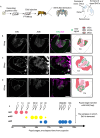
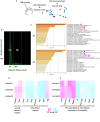
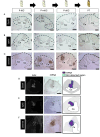

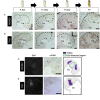

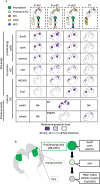
Similar articles
-
Analysis of the Differentiation of Kenyon Cell Subtypes Using Three Mushroom Body-Preferential Genes during Metamorphosis in the Honeybee (Apis mellifera L.).PLoS One. 2016 Jun 28;11(6):e0157841. doi: 10.1371/journal.pone.0157841. eCollection 2016. PLoS One. 2016. PMID: 27351839 Free PMC article.
-
Developmental stage-specific distribution and phosphorylation of Mblk-1, a transcription factor involved in ecdysteroid-signaling in the honey bee brain.Sci Rep. 2020 May 26;10(1):8735. doi: 10.1038/s41598-020-65327-z. Sci Rep. 2020. PMID: 32457433 Free PMC article.
-
Measures implemented in the school setting to contain the COVID-19 pandemic.Cochrane Database Syst Rev. 2022 Jan 17;1(1):CD015029. doi: 10.1002/14651858.CD015029. Cochrane Database Syst Rev. 2022. Update in: Cochrane Database Syst Rev. 2024 May 2;5:CD015029. doi: 10.1002/14651858.CD015029.pub2. PMID: 35037252 Free PMC article. Updated.
-
Strong antimicrobial activity and unique physicochemical characteristics in honey from Australian stingless bees Tetragonula carbonaria, Tetragonula hockingsi, and Austroplebeia australis.Appl Environ Microbiol. 2025 Jun 18;91(6):e0252324. doi: 10.1128/aem.02523-24. Epub 2025 May 21. Appl Environ Microbiol. 2025. PMID: 40397496 Free PMC article.
-
Systemic pharmacological treatments for chronic plaque psoriasis: a network meta-analysis.Cochrane Database Syst Rev. 2021 Apr 19;4(4):CD011535. doi: 10.1002/14651858.CD011535.pub4. Cochrane Database Syst Rev. 2021. Update in: Cochrane Database Syst Rev. 2022 May 23;5:CD011535. doi: 10.1002/14651858.CD011535.pub5. PMID: 33871055 Free PMC article. Updated.
References
-
- Seeley, T. D. Honey bee ecology: A study of adaptation in social life (Princeton University Press, 2014).
-
- von Frisch, K. The Dance Language and Orientation of Bees (Harvard University Press, 1967).
-
- Johnson, B. R. Within-nest temporal polyethism in the honey bee. Behav. Ecol. Sociobiol.62, 777–784. 10.1007/s00265-007-0503-2 (2008).
-
- Heisenberg, M. Pattern recognition in insects. Curr. Opin. Neurobiol. 5, 475–481. 10.1016/0959-4388(95)80008-5 (1995). - PubMed
-
- Menzel, R. et al. The knowledge base of bee navigation. J. Exp. Biol.199, 141–146. 10.1242/jeb.199.1.141 (1996). - PubMed
MeSH terms
Substances
Grants and funding
LinkOut - more resources
Full Text Sources
Miscellaneous

